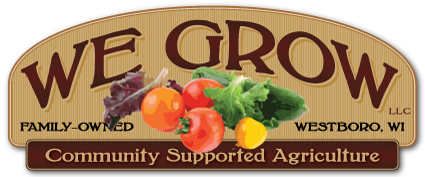In Retrospect
With our last few shares and final harvests comes very real retrospect of the season overall. We carefully identify things we need to prioritize to improve and value the feedback from our membership during the process. Especially those who have gone through more than one season and can compare one year to the next.
The late, wet spring nearly threw us completely off our course for the entire season. Weeks 5-7 were quite unnerving with slow growth across the fields. This was by far the worst bean and pea crops we’ve ever had. Deer damage eliminated the Swiss chard early in the game and took out our first planting of kohlrabi as well. The garlic was extremely weedy from the straw we chose to mulch it with leading to smaller harvest than expected. Pretty much every root crop experienced heavy insect damage below the soil line. Largely root maggot and wireworm. And the onions! We still don’t know why the onions never sized up.
What went well? The brassicas flourished in the cool weather and we harvested the most broccoli and cabbages ever. We were thrilled that the investments we made in the soil allowed us to finally include corn in the shares. From the same field, a bumper crop of winter squash. And it was also the first time we offered free pumpkin picking to the membership. And what a wonderful day it was to have folks on the farm! The carrots and potatoes didn’t get flooded out as was the case in 2016 when we got all of our fall carrots from another farm. Items we’ve been extremely limited on in the past have showed up this season as well like microgreens, beets, rutabaga, turnips, and kohlrabi.
So what will we change. We have to remember it is the first year in this field. It will take several years and tons of organic inputs to get this area to optimum soil structure and fertility. Constant addition of organic matter and rotation of cover crops and eventually, we will eliminate a lot of the insect and disease pressure simply by growing perfectly healthy plants. We also plan to try harder on a few things we missed like melons, leeks and cauliflower. We also intend to research into the root crop damage. We thought we had a good idea of how to curb it with companion plantings, soil temperature testing, and cultivation, but we were wrong. We also hope to bring on one more person our crew to help us achieve more succession plantings so our harvests are better timed out to meet our weekly CSA needs. We are hoping to gain enough capital over the winter to install a heated, double-walled tunnel to allow us to start the large number of seedling trays needed to get more plants in the ground earlier. We need more pre-season growing space! The free-range poultry was a huge success and we hope to simply expand on this offering so we can offer birds to customers at the farmers market as well as in our CSA program. This goes along with our long term goal of offering pork. With our own breeding stock and their young off to a great start, we should achieve this goal in spring of 2018. And finally, improved communication with members. The email messages have been hard to get together at the end of the season for lack of time and an on-and-off internet connection, so we have come to rely on our members reading their newsletter for the important information.
There is definitely much work to be done. The field work will be wrapped up in November and we will take time to re-group and formulate our improvement plan. The heart of the winter is the best time to linger over such matters along with the much anticipated seed purchases and field maps. The respite and relaxation is hard earned and truly so much sweeter after six days a week of fast-paced, hard work during the growing season.
We thank each and every one of you for hiring us to grow your food. Thank you for letting us into your kitchens and trying our products. There is hardly a more personal choice than the food we eat. We are humbled to have been chosen as your farmers.
Ready for furlough,
![]()
Week Twenty Newsletter CHECK BACK FOR UPDATED LINK

